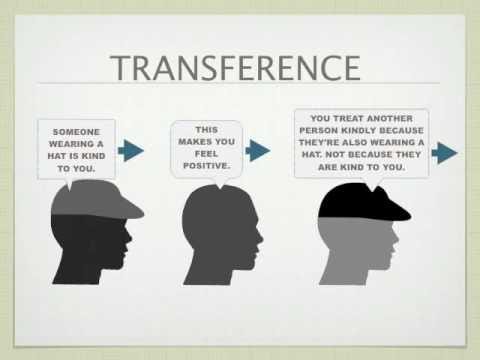When Ghosts from the Past Influence Our Present Social Interactions
Strange Ways We Form Immediate Adversaries and Allies
This article is part of a series where I highlight science that deserves more attention such as rethinking the nature of intellectual humility (here) and ADHD (here). This article is free to read. If you enjoy it, please consider upgrading to a paid subscription.
I hated the man with an intensity that did not correspond to my interactions. It must’ve been a message only available to my subconscious.
Meet Jake. We were research assistants at Stony Brook University, investigating parent-child interactions. I spent 6 to 8 hours per day analyzing video footage, time-stamping when the child was verbally or physically aggressive to the parent, or when the parent showed aggression. The research question: What occurred just prior? How did the scenario change when the child had Attention-Deficit Hyperactivity Disorder? The research question captivated me with its straightforwardness. Despite numerous naps in that windowless room, repeatedly rewinding VHS tapes, I felt compelled to find answers.
From the get-go, Jake was hostile (ironic in light of our work). Instead of a friendly introduction, he greeted me with a forceful shoulder bump. A strange jolt from the formality of everyone else in this academic environment. Something between a greeting and a warning. I immediately experienced a high level of distrust, anger, and nervousness around him. A set of emotions justified on day two when he erupted before I could get the keys into my office door lock.
“What the fuck did you do to my computer home screen?”
Baffled, I mustered, “Your home screen? What are you talking about? Did you get a computer virus or something?”
“No, you rearranged the icons on my home screen. It’s one thing to be on the computer, it’s another thing to move things around without asking me. What’s your problem?”

Sometimes somebody is so disproportionately unhinged that you become calm like a bomb. This was one of those moments.
He was upset because that the little icon for Microsoft Word was in the middle of the screen, and icons for Excel and Mulberry email (remember that bad boy?) were on the right side instead of the left. It was clear that Jake's issues extended far beyond misplaced icons or my presence.
I think back on how these argumentative interactions went undetected. Or how we didn’t end up in a violent altercation. Or how I focused on the research.
I bring Jake up to tell you about a weird, lingering effect that holds to this day, over 30 years later.
There are times when I encounter someone who bears an uncanny resemblance to Jake, whether it's his unsettling smirk, the particular way he slung a backpack over one shoulder, the distinctive short breath he’d take before lashing out, or even his peculiar posture while seated at a computer, his hips slouched low and legs splayed out, knees locked as if he was a pair of scissors insistent on occupying maximum space. These resemblances trigger an intense wave of revulsion and disinterest in me. I morph into a more reserved, frosty version of myself. I become reticent, responding minimally to any questions they ask, regardless of how engaging they may be. I interact with them as if they were Jake.
Because of a stranger’s superficial commonality with Jake, I superimpose my hatred onto them.
Underappreciated Work on Social Entanglement
I refer to the influence of Jake as the superimposing intimacy effect. Feel free, however, to use the more established term by Dr. Susan Anderson at New York University. In her body of research,
Transference occurs when a mental representation of a significant other is activated by cues in a new person that resemble the other. As a result, the self in relation to this significant other is activated, eliciting changes in affect, expectancies, motivations, and behaviors, as well as in the nature of the working self-concept, all reflecting the version of the self one is when with the significant other. Moreover, when people experience a threat to either a significant-other relationship or the self in the context of an encounter with a new person who triggers transference, this sets into motion self-regulatory processes, which play out in relations with the new person.
The downside is that strangers can be instinctively devalued when characters like Jake, who pose a threat, trigger strong emotions in dominant memories. Figures from early childhood, such as abusive or neglectful parents, can leave this strange lasting stain on future social relationships. Childhood bullies can also leave a lasting residue that spills over onto unsuspecting others - some who just want to innocently win your interest and affection.
On the upside, this same phenomenon of superimposed intimacy applies to positive figures in our lives. When someone embodies characteristics of a person from our past who we had a strong affection for, immediate intimacy, joy, trust, and a sense of deep, meaningful connections can attach to someone new. Love can be superimposed - which of course, can be a blessing or yet another downside - as now you might fail to disentangle what you feel from what is the lingering result of someone else’s positive legacy.
3 Provocations
Observe indicators of accelerated hate and love. Animosity can grow unexpectedly, without a valid reason. Friendships may develop faster than usual, bypassing the typical progression that involves spending considerable time together and engaging in mutual, gradual sharing of personal information.
Identify instances where you are superimposing past experiences onto interactions with people who bear superficial resemblances to figures from the past. Then ask - knowing this, do I want to keep the pace or intentionally slow it down?
Take steps to prevent negative past experiences from unduly influencing future social relationships and interactions. Ask - are strong, immediate negative feelings elicited by someone deserved?
Try to consciously channel the positive phenomenon of superimposed intimacy to foster immediate connections with new individuals.
I take great care to think about these three provocations. Why am I so close with my big research collaborator, Patrick McKnight? From the first day we met? He reminded me of my close college friend, Matt Florin. And so it goes…
And when I meet someone who resembles Jake, I do hesitate. I do have to regulate my emotions. Sometimes I fail, and I lose a potential opportunity. Knowing this work helps.
Get better at noticing.
Sitting with superimposed emotions.
And modify the perspective your brain is offering, to give people a chance.
For more on relationships, make sure to read the Substacks of
Todd B. Kashdan is an author of several books including The Upside of Your Dark Side (Penguin) and The Art of Insubordination: How to Dissent and Defy Effectively (Avery/Penguin) and Professor of Psychology and Leader of The Well-Being Laboratory at George Mason University.
Read Past Issues Here Including:
Creating Better Friendships: Two Suggestions
This is part of a series on loneliness including mistaken ideas and misconceptions about the lifestyles of lonely people. Get the full archives with 100+ posts by becoming a paid subscriber - here.





For someone so brilliant, Todd, you embody the feelings and understandings of the common man, and how admirable is that. I was reading with great curiosity this post, and all of a sudden I felt my gut tense up. I had totally forgotten about this instance. As a clinical psychologist for about five decades, how interesting for this memory to pop up. A man came in for therapy. As he was telling his story, I found myself sinking further and further back into my chair. I pushed backwards, until my back hurt. While trying to pay attention to his story, I had to shutter my feelings of contempt and fear and animosity. I told myself I would deal with it after the session. I went home that night and surveyed what was going on with me internally. Then it hit home. His entire face, especially his mouth and chin reminded me of parents of a boyfriend of mine. They didn’t like me because I wasn’t good enough for their country club son. They did everything that they could do for years to separate us. After I realized my client looked so much like my boyfriend‘s dad, I was able to ease up and change my attitude, and accept him and modify my reaction. Great post!